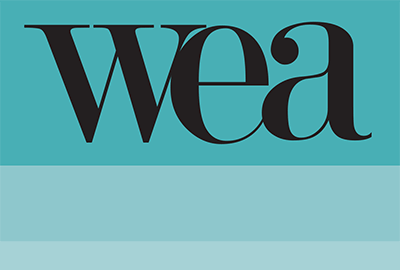Tips on Using Credit Card Style USB Drives for Dissemination
portfolio about blog contact Recent PostsDisseminationTips on Disseminating Credit Card Style USB Drivesby Cynthia Warger | July 07, 2019 | DisseminationAssume that you have completed your written and/or digital product and it is ready to be disseminated. You want to...
Another Win for Clients’ Products—Two Communicator Awards
portfolio about blog contact Recent PostsWEA General TopicsAnother win for Clients' Products — Two Communicator Awardsby Cynthia Warger | July 07, 2019 | WEA General TopicsOver the years, Warger, Eavy and Associates has received numerous professional awards for its...

Choosing the Product Format — WEA Guides the Process

Briefs. These formats typically are one- to four-page documents that are used when the message is succinct and requires an objective, formal presentation. Brief formats often are used to refer to a larger document, as is the case with an executive summary, essential findings from a large study, questions and answers on a topic, or recommendations customized for a specific audience (e.g., policymaker implications). These formats typically are one- to four-page documents that are used when the message is succinct and requires an objective, formal presentation. Brief formats often are used to refer to a larger document, as is the case with an executive summary, essential findings from a large study, questions and answers on a topic, or recommendations customized for a specific audience (e.g., policymaker implications).
Practical tools. Tool formats help the user become knowledgeable about a topic, develop skills, and/or take action on something. Examples include how-to or step-by-step guides, manuals, and booklets. Tools include various items—such as assessments, checklists, forms—that assist the user in implementing a strategy or approach. In recent years, toolkits have become a popular format for packaging a variety of items or tools designed to help users implement an idea or take action on something. Toolkits might contain a print or web-based guide and a digital feature (e.g., USB drive) that contains a range of supplemental files, including PDFs, PDF fillable forms, MP4 movies, audio presentations, slide presentations, Excel files, professional development tools (face-to-face and virtual formats), and so on. These may be web-based, printed, or a combination.
Novelty items. These product formats are intended to raise attention and distribute limited information into people’s hands quickly. They also help users stay linked to a larger community of users. We typically think of novelty formats as conference or workshop give-aways (e.g., inscribed pens, posters, keychains, bookmarks, magnets, etc.). However, the format may be a novelty feature that makes a product unique and noteworthy (e.g., an easel back to a manual, a flip book of tips, a laminated desk guide that summarizes an approach, wallet-sized cue cards, and so on).
Public relations materials. These product formats help advertise your message. They create awareness and are designed to get you noticed. Examples include brochures, flyers, postcards, announcements, space ads, greeting cards, press releases, social media campaigns, and events (e.g., panel discussions, press conferences, etc.). These product formats help advertise your message. They create awareness and are designed to get you noticed. Examples include brochures, flyers, postcards, announcements, space ads, greeting cards, press releases, social media campaigns, and events (e.g., panel discussions, press conferences, etc.).
Multimedia formats. These product formats are used when your message is enhanced by seeing it and/or hearing it. Often, media compliments other products by providing multiple access points. Examples include websites, video programs (e.g., public service announcements, documentaries, vignettes, short ads, how-to demonstrations, original programming, etc.), audio programs (e.g., podcasts, toll-free messages, etc.), and social media.
Choosing the Product Format—WEA Guides the Process
Armed with an understanding of various product formats, you are in a better position to choose which product format (or formats) is best for connecting your message with your audience. WEA has a successful track record in helping clients decide the best approach for influencing their audiences. We specialize in developing customized books, brochures, briefs, newsletters, annual reports, video scripts, multimedia products, and specialty publications—and have numerous examples of how each format can be maximized for the greatest impact.
- Your message.
- Your audience.
- Your goal, purpose, and/or objective.
- Your budget.
While this analysis might add some time onto the project, WEA believes it is time well spent in ensuring that your ideas and information make a difference.
